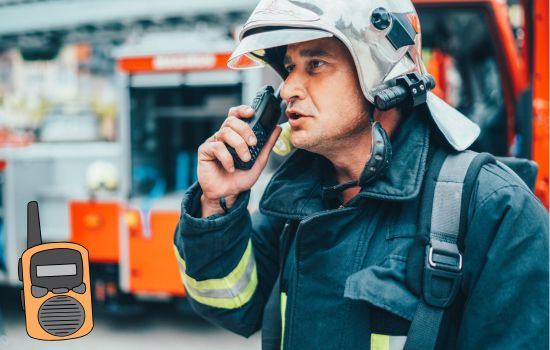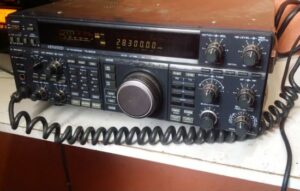In an increasingly connected world, having a fast and reliable communication option can make all the difference in emergency situations, teamwork, or simply enjoying a different experience when talking on the phone.
Turn your cell phone into a walkie talkie It is easier than ever today thanks to various applications that leverage Internet technology and mobile networks to simulate classic radio communication.
Below, we'll explore why it's important to have an extra mode of communication, the benefits of using walkie-talkie apps, and how two of the most popular ones work: Zello Talkie and CB Walkie Talkie.
The importance of an extra mode of communication
In situations where traditional telephone coverage fails, such as in rural areas, tunnels, or mass events, relying exclusively on voice calls can leave us stranded.
See also
- Master the Guitar from Home: Your Free Path to Music
- Your Jewel, Your Truth: The Smartphone as a Verifier
- Find out who visits your social networks
- Turn your mobile phone into a metal and gold detector
- Top 5 Powerful Foods to Improve Your Glucose Control
Additionally, during emergencies—hurricanes, earthquakes, or fires—cellular networks can become overloaded, making critical communication difficult. virtual walkie-talkie offers:
- Connection on specific channels: They allow you to create radio-style conversation “rooms” where only authorized users can listen and speak.
- Minimum latency: Push-to-Talk (PTT) technology ensures voice transmission is almost instantaneous, without waiting for a call to be established.
- Efficient data consumptionUnlike traditional video or VoIP calls, PTT apps consume very few megabytes per minute.
- Usability without phone numberIn many cases, a nickname and an internet connection are enough to start talking.
For these reasons, having an additional means of communication is essential for field work teams (security, construction, adventure tourism), family groups, or simply for outdoor enthusiasts.
Benefits of having a walkie-talkie app when you need it
- Instant communication with a single touch
By pressing an on-screen button, your voice is instantly broadcast to all members of a channel—no need to dial numbers or wait for ringtones. - Organization of teams and groups
You can create multiple topic or project channels, assign listening or speaking permissions, and keep a log of voice messages. - Works over Wi-Fi and mobile networks
Whether you're connected to Wi-Fi, 4G, 5G, or roaming abroad, the app adapts and keeps communication flowing. - Recording and storing messages
Many apps save your broadcast history so you can review it later or share important snippets. - Security and privacy
Some services offer end-to-end encryption, user authentication, and access controls to protect your conversations. - Cost savings
Instead of investing in professional radio equipment or acquiring frequency permits, all you need is your smartphone and the corresponding app. - Device versatility
In addition to mobile devices, these apps often have versions for PCs, tablets, or even smartwatches, expanding their usability.
Featured Apps: Zello Talkie and CB Walkie Talkie
Zello Talkie
Zello Talkie has established itself as one of the most popular PTT applications worldwide. Its key features include:
- Public and private channels: You can join millions of existing channels or create your own, setting your privacy settings to suit your needs.
- HD audio qualityEven with limited connections, Zello optimizes bandwidth to deliver clear, understandable voice.
- Stored messagesIf you're not online at the time of the broadcast, Zello saves messages for you to listen to later.
- Customizable notifications: Define distinct tones and vibrations for each channel, ensuring you don't miss critical communications.
- Cross-platform compatibility: Available on Android, iOS, Windows, Linux, and dedicated devices that operate as IP radio.
- Professional integrationsZello for Work offers advanced user management, usage statistics, and corporate support.
With Zello, turning your phone into a walkie-talkie is as simple as downloading the app, signing up with your email or phone number, and selecting a channel. Its clear interface lets you see who's talking in real time and access your message history with a single swipe.
CB Walkie Talkie
CB walkie-talkies are another interesting option for those looking for a quick and hassle-free PTT experience. Their strengths include:
- No registration requiredMany users appreciate being able to use the app under a pseudonym, without having to create detailed accounts.
- List of preset channelsFrom emergency channels to thematic channels (travel, events, sports), available instantly.
- Offline mode via Bluetooth: Some versions allow point-to-point communication via Bluetooth when there is no internet.
- Simple design: With a large “talk” button and list of connected users, the learning curve is practically zero.
- Low battery consumption: Optimized to run for hours in the background, ideal for long work days.
- Minimal advertising: The free version barely interrupts with ads, and the premium option completely eliminates any interruptions.
To use a CB walkie-talkie, simply choose your preferred channel, set your nickname, and press "PTT" when you need to transmit. Its simplicity makes it ideal for casual users, families traveling, or small work teams.
A brief history of the walkie-talkie
The concept of the portable push-to-talk radio was born in the 1930s and consolidated during World War II. Some key milestones:
- Donald L. Hings and the “packset” (1937)
Canadian engineer Donald Hings develops a 2-watt transceiver for park rangers to communicate in remote areas. This prototype, known as a "packset," is one of the earliest predecessors of the walkie-talkie. - Alfred J. Gross and the first patents
In parallel, American engineer Alfred Gross patented portable radio systems that would allow two-way communications with a single device. - Motorola SCR-300 (1940)
During World War II, Motorola manufactured the SCR-300, a 12-kilogram device that soldiers carried on their backs, becoming the first effective military walkie-talkie. - Hand-to-hand walkie talkie
Shortly after, the Motorola Handie-Talkie SCR-536 emerged, a smaller model that could be held in one hand, popularizing the term “walkie talkie” among Allied troops. - Civil and recreational use
Beginning in the 1950s, the technology became more accessible, reaching fire departments, emergency services, and eventually consumer versions for outdoor enthusiasts.
Over the decades, analog devices gave way to digital systems, and the arrival of mobile internet allowed conventional smartphones to take over the walkie-talkie function, giving rise to the apps we enjoy today.

Conclusion
In short, turn your cell phone into a walkie-talkie It is extremely useful for those who require fast, economical and reliable communication, whether in emergency situations, teamwork or recreational activities.
Apps leverage your smartphone's connectivity to deliver instant channels, high-quality audio, and low data usage.
Furthermore, the long history of the walkie-talkie—from the bulky military models of the 1940s to modern apps—demonstrates that the need for direct, unmediated communication is timeless. Whether you're in the middle of an expedition, coordinating an event, or simply exploring new ways to converse, your mobile phone can be much more than a phone; it can become a true walkie-talkie ready for any occasion.
Download links
Turn your smartphone into a walkie talkie instantly









